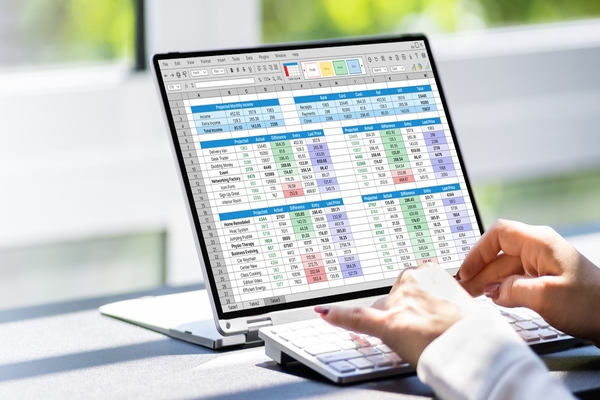Best practices for successful onboarding

Aisling MacNamara at LearnUpon explains why first impressions count when onboarding new employees
Onboarding presents businesses with a golden opportunity to equip new starters with the knowledge, resources, tools, and behaviours they’ll need to get productive quickly.
For firms that get it right, a good onboarding experience has been shown to improve the long-term job satisfaction of employees by more than 2.6 times. This translates into a highly motivated workforce that performs effectively and is less likely to look elsewhere for a job.
Despite this, many organisations continue to get onboarding wrong. Just 12% of employees believe their organisation provides a good onboarding programme—a misstep that ultimately impacts workforce engagement, retention, and profit. Indeed, for some new hires, the initial onboarding process they encounter will make or break their decision to stay.
With so much riding on this crucial activity, how can organisations ensure they put in place an effective onboarding process that delivers a positive first impression for new hires from the get-go?
Building a modern onboarding experience
The rise of remote and hybrid working has seen many organisations turn to online onboarding to support new employees, regardless of their location, in a consistent, efficient, and measurable way.
In doing so, they’ve redesigned the onboarding process with efficiency in mind. Rather than overwhelming new hires with an avalanche of information, they’ve thought carefully about every aspect of the onboarding process. And they have one goal in mind: craft an onboarding process that’s relevant and impactful for the individual employee and the business as a whole.
Let’s take a look at the five best practices that underpin a highly effective onboarding plan.
1. Get to grips with onboarding goals
Understanding what knowledge, skills, and behaviours individuals need to be effective is a critical first step to establishing standardised onboarding goals for new hires.
These onboarding goals will be role-dependent. For example, the goal when hiring a salesperson may be that after 30 days of onboarding training, they can deliver a demo to their team that reflects the business’ practices and style.
Goals should be closely aligned with key metrics or milestones that a new hire needs to achieve to be successful in their role. Therefore, you should focus on front-loading information and knowledge that is directly applicable to their role and be ruthless about removing anything unnecessary.
By establishing onboarding goals that are focused on the successful performance and integration of team members, organisations will be well positioned to develop a strong onboarding strategy that prepares new hires appropriately and enables them to understand exactly how they are expected to perform.
2. Establish e-Learning onboarding contributors
For some organisations, this team will feature personnel from either HR, L&D, or Training & Development. For others, this core team will be supplemented by representatives from across the business—line managers, subject experts, and even co-workers.
Together, these individuals are responsible for determining the scope of training content new hires will require, how learner progress will be assessed, and setting an appropriate timeline for knowledge acquisition.
Organisations can scale their efforts by agreeing on what teams own content and the updates that are invariably needed. By owning all the content, it’s easy to become overwhelmed and have out-of-date content.
Instead, the security team should own the security awareness course, the people team should have HR policies, and recruitment should own the interview training, for example. Organisations can use the functionality in their LMS to assign teams as instructors to further empower their ownership and reduce the administrative burden on one specific team.
3. Invest in the right tools
There are a number of top-notch tools today’s businesses can use to deliver an efficient and effective onboarding experience. Some can be used alone, while others work well as part of a wider onboarding suite.
HR systems are a must-have for collating resources, engaging with new joiners, and managing onboarding procedures. Meanwhile, a purpose-built LMS platform ensures organisations can deliver and track their new-hire training programmes. Even better, by integrating their LMS and HR systems, organisations will be able to both measure the success of their onboarding programmes and effectively manage the long-term education of employees.
To maximise effectiveness, organisations will need to think through some key questions, such as whether onboarding training will be delivered primarily online or if a blended learning model featuring a mix of face-to-face and online training will be deployed.
4. Map and plan onboarding steps and eLearning
Next, the organisation can proceed with creating the learning steps and mini-goals that together build into a highly focused onboarding strategy. One that takes account of the baseline knowledge of new hires and what they need to know to perform effectively in their role.
Starting with the initial setup, which should include an overview of core company values, policies, and brand materials, new hires can then be guided through the structure and working practices of their team. This will include confirmation of the scope of their role and day-to-day job responsibilities.
Mapping these steps ensures that new joiners will progress through a well-structured and phased onboarding education programme that includes mandatory training.
5. Measure KPIs
To evaluate if their onboarding strategy delivers against anticipated goals, organisations will need to set some specific KPIs and determine how to measure them. These could include cost per new hire onboarding, retention rates, or the efficiency of the onboarding process.
Organisations looking to go deeper can use their LMS to evaluate in detail how their onboarding programme is performing. For example, reviewing the overall performance of new hires, validating they’re gaining the knowledge they need, and identifying if and where there’s room for improvement.
The impact of AI on onboarding
Today’s HR professionals can now take advantage of AI technologies to automate many of the routine tasks associated with onboarding. Everything from generating paperwork to using chatbots to gather feedback and respond to questions from new hires.
Data analytics and machine learning are also helping organisations personalise the learning experience for new hires. For example, using interactive bots to test and assess a learner’s knowledge, proactively deliver learning prompts and recommendations, and ensure the delivery of learning is appropriately paced in line with an individual’s progression.
Leveraging data from automated chats, onboarding surveys, and other data sources, HR departments can gain powerful insights into a new hire’s strengths, preferences, and support needs. All of which ensures new hires can be integrated more smoothly into the organisation.
Engineering a positive onboarding experience
Without an effective onboarding process, organisations risk getting locked into an endless turnover cycle of recruiting and hiring, and the costs can add up fast.
Employee onboarding isn’t just about giving new hires the information and resources they need. It’s also about nurturing new employees step by step towards the end goal of being a productive and supported member of the organisation.
It’s also about having fun and ensuring that new starters can immerse themselves in the company culture. With a robust and scalable onboarding programme, organisations can focus time on creating connections and building relationships with their employees.
To achieve this, onboarding training resources need to be easy to access and navigate, with automated notifications that ensure new employees know what training has to be done and by when. That includes providing plenty of interactive opportunities that will motivate new hires to consistently meet their onboarding goals.
In other words, organisations need to create a positive onboarding experience that’s smooth, straightforward, and engaging for every new employee, and that’s exactly what today’s LMS systems make it possible for organisations to deliver.
Aisling MacNamara is Director, Learning, Enablement, and Inclusion at LearnUpon
Main image courtesy of iStockPhoto.com and Delmaine Donson

Business Reporter Team
Most Viewed
Winston House, 3rd Floor, Units 306-309, 2-4 Dollis Park, London, N3 1HF
23-29 Hendon Lane, London, N3 1RT
020 8349 4363
© 2025, Lyonsdown Limited. Business Reporter® is a registered trademark of Lyonsdown Ltd. VAT registration number: 830519543





